Casper Water Quality at a Glance
serious concerns
Is Casper Water Safe to Drink?
Mixed – Filtration Strongly Recommended – While Casper water meets federal standards, independent testing reveals significant concerns including arsenic at 36x health guidelines and haloacetic acids at 72x health guidelines. The water contains 27 detectable contaminants, most with cancer-causing attributes. Radium levels are 39x health guidelines.
⚠️ Key Concerns for Casper Residents
- Arsenic: At extremely high levels (36x health guidelines) – linked to cancer, heart disease, and diabetes
- Disinfection Byproducts: Haloacetic acids (HAA5 at 72x, HAA9 at 217x health guidelines) – cancer-causing chlorination byproducts
- Radioactive Contaminants: Radium at 39x health guidelines – naturally occurring but concerning levels
- Multiple Contaminants: 27 total detectable contaminants with most having cancer-causing attributes
Read the full report below for detailed analysis, specific contaminant data, and actionable recommendations for Casper residents.
Casper – Wyoming – Water Quality Report 2025: Arsenic, Disinfection Byproducts & Safety Concerns across your city
Casper Water provides comprehensive water services to approximately 80,000 residents across the greater Casper metropolitan area, including Natrona County and surrounding communities. As Wyoming’s second-largest city, Casper operates through the Central Wyoming Regional Water System, which encompasses a 39-million-gallon water treatment facility, 400 miles of water distribution lines, 15 water booster stations, and 23 water storage tanks that deliver an average of 12 million gallons of drinking water daily to central Wyoming’s energy capital.
Casper sources its drinking water from two primary sources: approximately 70% comes from groundwater pumped from the North Platte River alluvial aquifer via 29 wells, while 30% is surface water drawn directly from the North Platte River. Both sources originate from snowmelt in the upper North Platte River basin and undergo comprehensive treatment including ozone disinfection, chloramination, and corrosion inhibitors. While Casper’s water meets all federal and state quality standards, independent testing reveals significant concerns including arsenic at 36x health guidelines, haloacetic acids at 72x health guidelines, and 27 total detectable contaminants with most having cancer-causing attributes. The utility has implemented significant investments in water treatment technology, conservation programs, and infrastructure modernization to ensure sustainable water supply for Wyoming’s oil and gas industry hub.
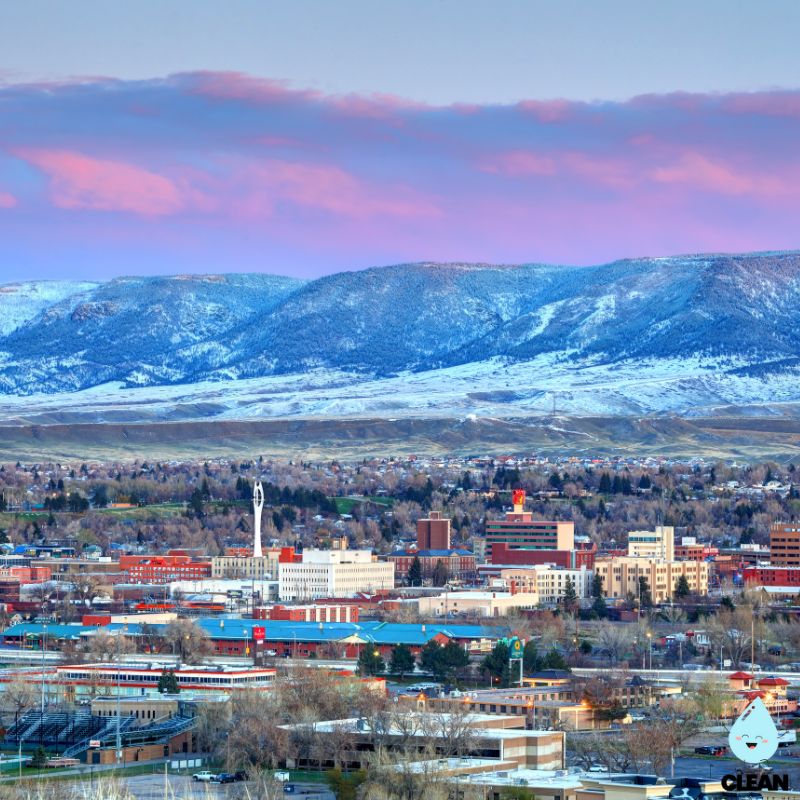
Casper Water Quality: Current Status (2024-2025)
Latest Testing Results
- Comprehensive Contaminant Detection: Independent testing conducted by the Environmental Working Group found 27 detectable contaminants in Casper’s water supply, with 14 exceeding EWG health guidelines despite meeting federal standards.
- Testing Scope: Casper conducts water quality monitoring 24/7 with staff on duty year-round at the treatment facility, testing for 82 different drinking water contaminants as required by EPA regulations.
- Compliance Status: Casper’s water consistently meets all federal and state drinking water standards, maintaining compliance with EPA and Wyoming Department of Environmental Quality regulations as confirmed in the 2024 water quality report, though independent analysis reveals concerns beyond regulatory minimums.
Water Sources
- North Platte River Alluvial Aquifer: Primary source (approximately 70% of supply) accessed through 29 groundwater wells that tap into the extensive aquifer system beneath the North Platte River valley.
- North Platte River Surface Water: Secondary source (approximately 30% of supply) drawn directly from the North Platte River, which originates as snowmelt from the upper basin in Colorado and southern Wyoming.
- Watershed Protection: The Sage Creek-North Platte River watershed contains both impaired and good-condition water sources, with Casper Creek rated as impaired while the North Platte River maintains good condition status.
Advanced Treatment Technology
- Central Wyoming Regional Water Treatment Plant: The 39-million-gallon-per-day facility utilizes advanced ozone treatment for primary disinfection, followed by filtration, chloramination for secondary disinfection, and corrosion inhibitors.
- Groundwater Treatment: Groundwater from the 29 wells receives ozone treatment and chloramination disinfection, plus corrosion inhibitors to protect both distribution infrastructure and residential plumbing systems.
- Multi-Barrier Approach: Despite comprehensive treatment including coagulation, flocculation, sedimentation, advanced filtration, and dual disinfection methods, significant contaminants including arsenic and disinfection byproducts remain at concerning levels.
Infrastructure Modernization
- Distribution System Improvements: Ongoing modernization of 400 miles of water mains throughout the service area, with systematic replacement of aging infrastructure prioritizing areas with highest needs and growth.
- Storage and Pumping Upgrades: Maintenance and enhancement of 23 water storage tanks and 15 booster stations to ensure reliable water pressure and supply throughout Casper’s service area.
- Smart Water Management: Implementation of advanced monitoring systems and the new Utility Billing Account Management portal launched in 2024, providing real-time account management and consumption tracking for customers.
Customer Protection Initiatives
Casper Water provides extensive customer support through various programs, including emergency response services available 24/7 and water conservation assistance programs. The utility’s commitment to transparency includes annual water quality reports and regular community updates about system improvements. However, given independent testing revealing arsenic levels 36 times health guidelines and multiple carcinogenic contaminants, residents should consider additional protective measures including home filtration systems. Educational outreach helps residents understand water quality, conservation practices, and the value of water resources in central Wyoming’s semi-arid climate. Casper’s investments in advanced treatment technologies, dual-source water supply, and comprehensive infrastructure modernization demonstrate its dedication to providing federally compliant drinking water while addressing challenges including population growth, energy sector demands, and naturally occurring contaminants in Wyoming’s high desert environment.
Recommendations for Casper Residents
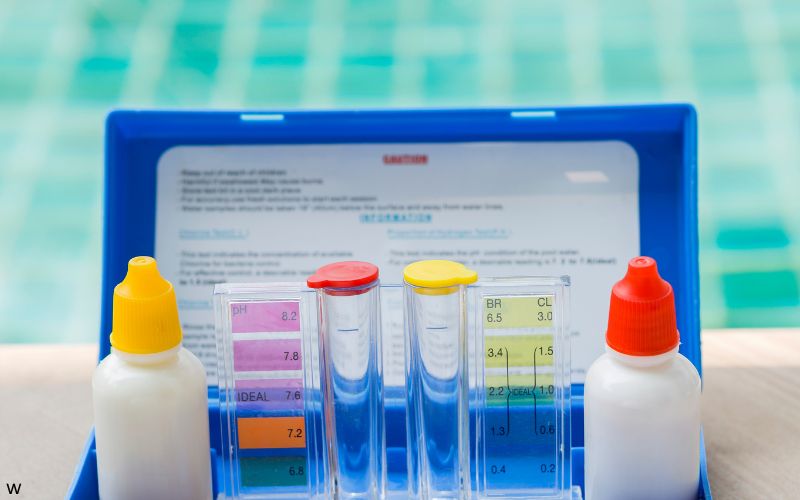
Test Your Water
Given the detection of arsenic at 36x health guidelines and multiple concerning contaminants, independent water testing is strongly recommended for all Casper residents. Contact certified labs for comprehensive testing including arsenic, haloacetic acids, and radioactive contaminants like radium.
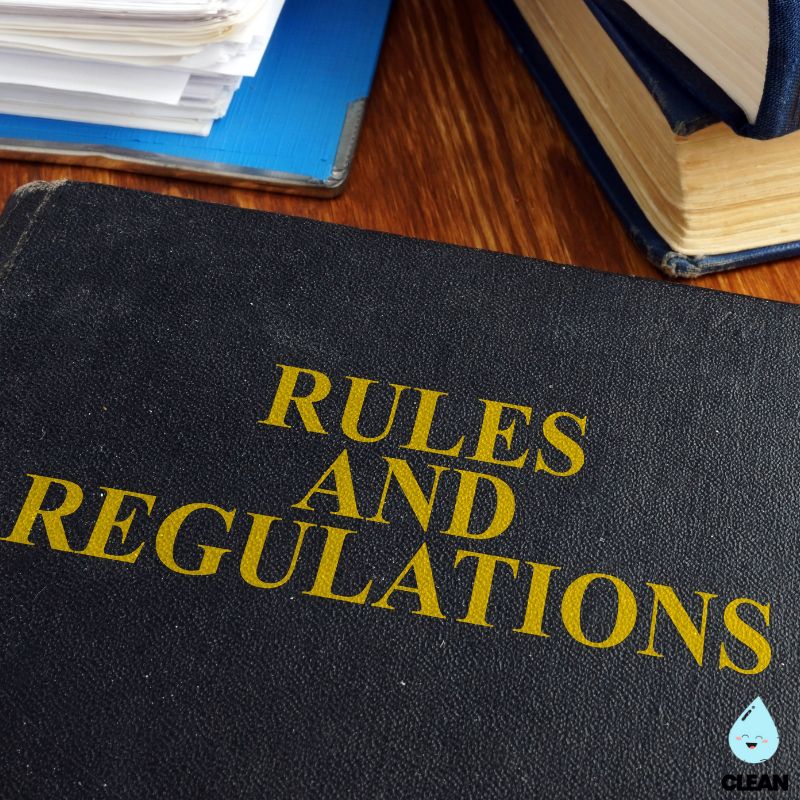
Follow Water Restrictions
Adhere to Casper’s Permanent Conservation Measures, including outdoor watering restrictions (odd-numbered addresses on Tuesday, Thursday, Saturday; even-numbered addresses on Wednesday, Friday, Sunday). No watering between 10 a.m. and 6 p.m.

Install Home Filtration
Given arsenic levels at 36x health guidelines and haloacetic acids at 72-217x health guidelines, home filtration is essential for Casper residents. Use NSF-certified filters specifically designed to remove arsenic, disinfection byproducts, and radioactive contaminants.

Use Online Account Management
Take advantage of Casper’s new Utility Billing Account Management portal launched in 2024, which provides real-time account management, usage tracking, and convenient online payment options to help monitor and reduce water consumption.

Report Issues
Contact Casper Water Customer Service for water main breaks, pressure problems, or quality concerns. Report leaks promptly to help conserve water in Wyoming’s semi-arid climate and maintain system integrity.
Frequently Asked Questions
Is Casper’s tap water safe to drink?
Casper’s tap water meets all federal and state drinking water standards, but independent testing reveals significant health concerns. The water contains arsenic at 36 times health guidelines, haloacetic acids at 72-217 times health guidelines, and radium at 39 times health guidelines.
While the city’s water comes from the North Platte River and groundwater from the alluvial aquifer and undergoes comprehensive treatment including ozone disinfection and chloramination, 27 contaminants have been detected with most having cancer-causing attributes. Home filtration is strongly recommended for all Casper residents despite regulatory compliance.
Why does my water sometimes taste or smell different?
Occasional taste and odor changes can occur due to several factors:
1. High contaminant levels: Arsenic and disinfection byproducts can affect taste and odor, particularly given the extremely high levels detected in independent testing
2. Treatment adjustments: Changes in ozone or chloramine levels based on source water conditions and regulatory requirements
3. Distribution system factors: Variations in water age or mineral content as water travels through the 400-mile distribution network
If taste or odor issues persist, contact Casper Water Customer Service and consider independent water testing. Running cold water for a few minutes after periods of non-use can help improve water quality from your tap.
Does Casper have lead in its water system?
Casper Water has been and continues to be compliant with all federal and state regulations for lead and copper in drinking water, and lead has been detected in the water supply:
• Lead presence: Independent testing has confirmed the presence of lead in Casper’s water supply, though below federal action levels
• Corrosion control: The utility uses industry best practices including corrosion inhibitors and pH optimization to prevent leaching of lead and copper from plumbing systems
• Testing results: The most recent lead and copper sampling in 2023 showed levels below federal action limits but still present in the water supply
• Treatment protection: Advanced treatment including ozone disinfection and corrosion inhibitors helps minimize lead contamination in the distribution system
Homes built before 1986 have a higher likelihood of containing lead solder or components in internal plumbing, which is why residents should contact certified laboratories for independent lead testing.
Are there water restrictions in Casper?
Casper operates under Permanent Conservation Measures to manage water resources in Wyoming’s semi-arid climate:
Permanent Conservation Measures:
• Irrigation limited to three days per week (odd-numbered addresses on Tuesday, Thursday, Saturday; even-numbered addresses on Wednesday, Friday, Sunday)
• No outdoor watering between 10 a.m. and 6 p.m. to minimize evaporation during peak heat hours
• No water waste including runoff onto streets, sidewalks, or other impervious surfaces
Drought Response:
During severe drought conditions, additional restrictions may be implemented based on reservoir levels and regional water supply conditions. Current status and any temporary restrictions are available through Casper Water Customer Service.
Quality News About Your Water
Get the comprehensive water quality news coverage you need with our dedicated US Water News Service. From coast to coast, we deliver in-depth reporting and expert analysis on PFAS contamination, EPA regulatory changes, infrastructure developments, and emerging water safety issues affecting communities nationwide. While mainstream media only covers the biggest stories, we provide the detailed, ongoing coverage that helps you understand the full scope of America’s water challenges. Whether you’re a concerned citizen, water professional, or community leader, our daily updates and analytical insights keep you informed about the issues that matter most to public health and environmental safety.
Contaminants of Concern
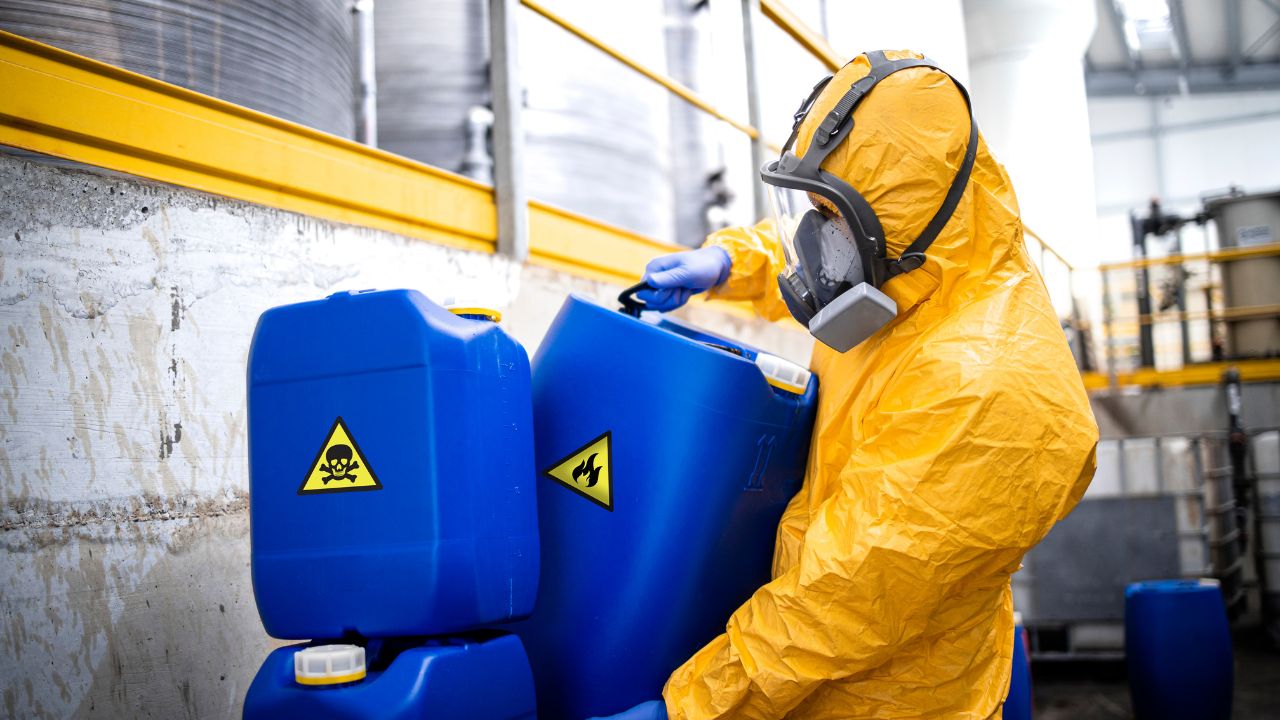
Arsenic
Source: Naturally occurring element found in groundwater from the North Platte River alluvial aquifer and geological formations throughout central Wyoming
Health Effects: Long-term exposure increases risk of cancer, heart disease, diabetes, and neurological problems; particularly dangerous for pregnant women and children
Current Levels: Independent testing detected arsenic at extremely high levels – 36 times the EWG health guideline, making it the most serious contaminant concern in Casper’s water supply EPA Limit: 10 ppb maximum contaminant level
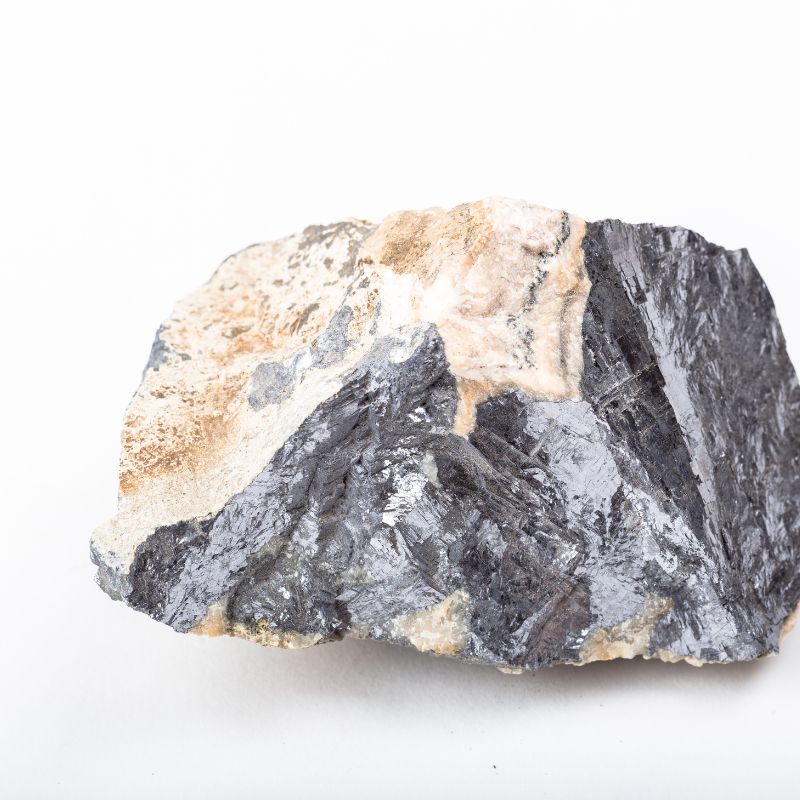
Haloacetic Acids
Source: Disinfection byproducts formed when ozone and chloramine disinfectants react with naturally occurring organic matter in source water from the North Platte River
Health Effects: Cancer-causing compounds that may increase risk of liver, kidney, and other cancers; reproductive and developmental effects during pregnancy
Current Status: HAA5 detected at 72 times health guidelines and HAA9 at 217 times health guidelines – representing extremely high levels of these cancer-causing byproducts EPA Limits: 60 ppb for HAA5; varying limits for other haloacetic acids
Please read – our information
The information presented on cleanairandwater.net is compiled from official water quality reports, trusted news sources, government websites, and public health resources. While we strive for accuracy and thoroughness in our presentations, we are not scientists, engineers, or qualified water quality professionals.
Our mission is to present water quality information in an accessible, real-world format that helps people understand what’s in their water and make informed decisions about their health and safety. We believe that complex environmental information should be available to everyone in a format that’s easy to understand.
We make every effort to ensure our content is current and accurate, but we cannot guarantee that all information is complete or error-free. This website should not replace official communications from your local water utility or health department. We always recommend consulting official sources for the most up-to-date information regarding your specific water system.
Clean Air and Water is not liable for any unintentional errors, omissions, or outdated information. The content on this site is provided for informational purposes only and should not be considered professional advice.


